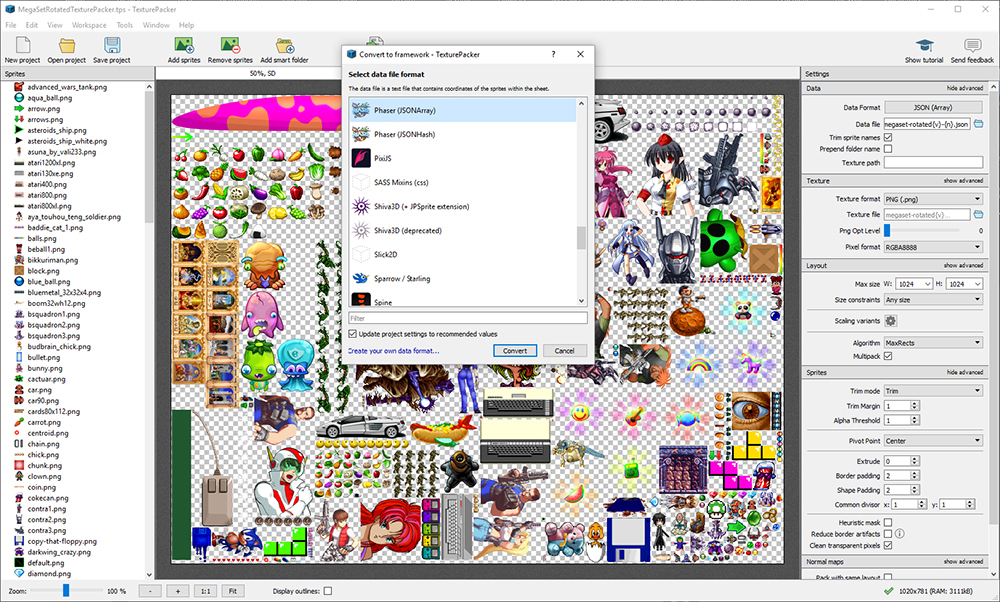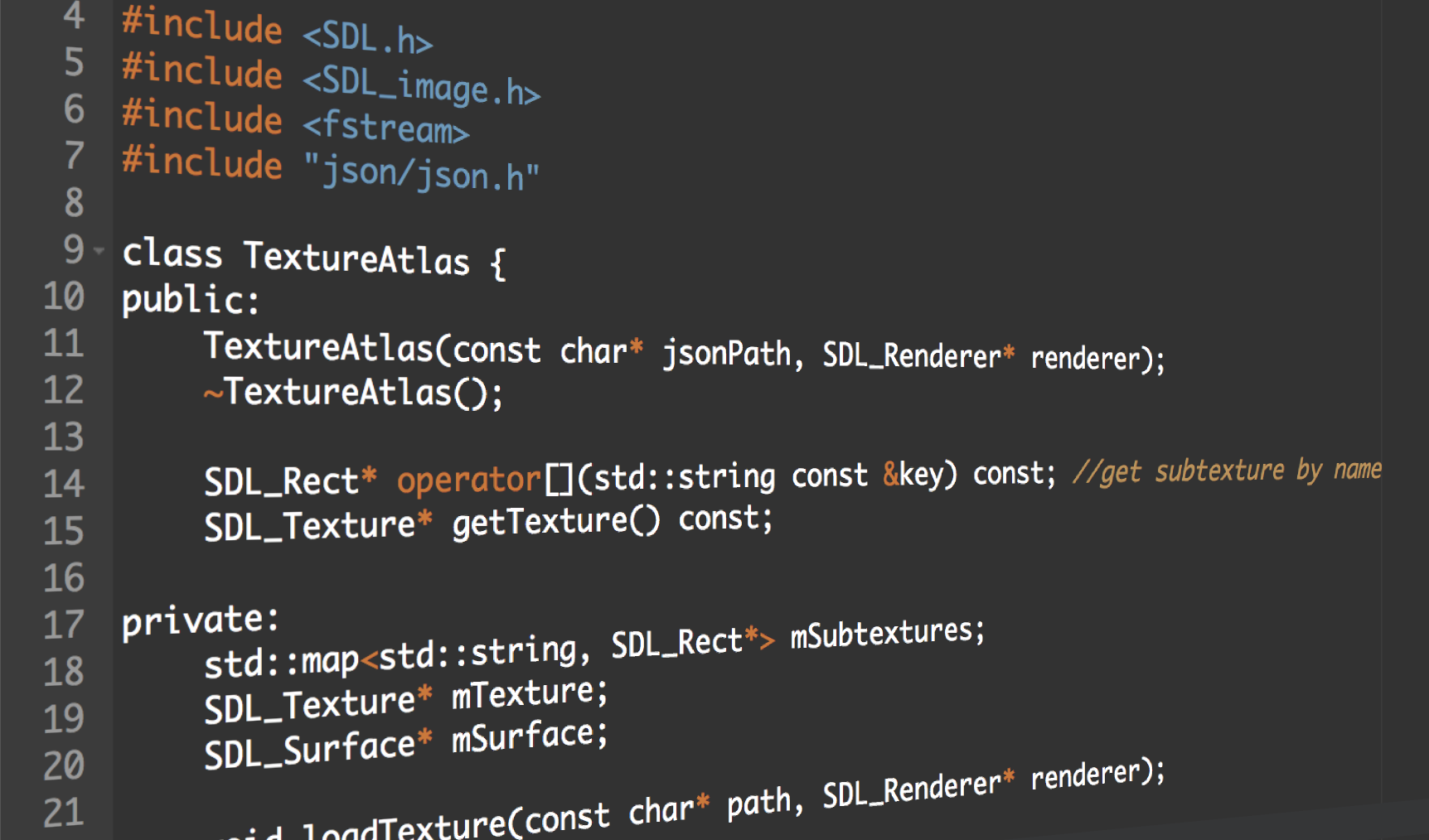
- Texture packer alternative how to#
- Texture packer alternative update#
- Texture packer alternative manual#
DefaultPackerPolicy will use rectangle packing by default unless “” is specified in the Packing Tag (i.e.See in Glossary settings will be grouped into the same atlas where possible. See Texture Compression, Animation Compression, Audio Compression, Build Compression. Sprites with the same Texture compression A method of storing data that reduces the amount of storage space it requires. Atlases are then further sorted by the Texture import settings so that they match whatever the user sets for the source textures.


With these policies, the Packing Tag property in the Texture Importer directly selects the name of the atlas where the Sprite will be packed and so all Sprites with the same packing tag will be packed in the same atlas. It is possible to create your own packing policies (see below) but the Default Packer Policy, Tight Packer Policy and Tight Rotate Enabled Sprite Packer Policy options are always available.
Texture packer alternative how to#
The Sprite Packer uses a packing policy to decide how to assign Sprites into atlases. At the right of the toolbar are two controls to zoom the view and to switch between color and alpha display for the atlas. The menu next to the page number selects which “packing policy” is used for the atlas (see below). The View Atlas and Page # menus allow you to choose which page of which atlas is shown in the window (a single atlas may be split into more than one “page” if there is not enough space for all Sprites in the maximum Texture size). (A related Repack button will appear when you implement a custom packing policy as explained in Customizing the Sprite Packer below).
Texture packer alternative update#
The Pack buttons initiates the packing operation but will not force any update if the atlas hasn’t changed since it was last packed. More info See in Glossary at the top of the Sprite Packer window has a number of controls that affect packing and viewing. The toolbar A row of buttons and basic controls at the top of the Unity Editor that allows you to interact with the Editor in various ways (e.g. More info See in Glossary outline and it also defines the area used for tight packing. Nurbs, Nurms, Subdiv surfaces must be converted to polygons. Unity supports triangulated or Quadrangulated polygon meshes. Meshes make up a large part of your 3D worlds. The outline is actually the render mesh The main graphics primitive of Unity. If you select a Sprite in the Project panel, this will also be highlighted to show its position in the atlas. If you open the Sprite Packer window (menu: Window > 2D > Sprite Packer) and click the Pack button in the top-left corner, you will see the arrangement of the textures packed within the atlas. The Sprite packing mode can be changed from Disabled to Enabled for Builds (packing is used for builds but not Play mode) or Always Enabled (packing is enabled for both Play mode and builds). The Sprite Packer is disabled by default but you can configure it from the Editor window (menu: Edit > Project Settings, then select the Editor category). Users are required to specify a Packing Tag in the Texture Importer to enable packing for Sprites of that Texture. The atlas can optionally be packed on entering Play mode or during a build and the graphics for a Sprite object will be obtained from the atlas once it is generated.
Texture packer alternative manual#
More info See in Glossary so that the user needs to do no manual assignment. In each Scene, you place your environments, obstacles, and decorations, essentially designing and building your game in pieces. Think of each unique Scene file as a unique level. Unity handles the generation and use of Sprite atlas textures behind the scenes A Scene contains the environments and menus of your game. Unity provides a Sprite Packer utility to automate the process of generating atlases from the individual Sprite textures. For optimal performance, it is best to pack graphics from several Sprite textures tightly together within a single Texture known as an atlas. However, a significant portion of a Sprite Texture will often be taken up by the empty space between the graphic elements and this space will result in wasted video memory at runtime. When designing Sprite graphics, it is convenient to work with a separate Texture file for each character. More info See in Glossary system when packing Textures. Also referred to as a texture atlas, image sprite, sprite sheet or packed texture. Existing Projects already using Sprite Packer will still be able to continue using it, however any new Project created in 2020.1 onwards will default to the Sprite Atlas A texture that is composed of several smaller textures. More info See in Glossary Packer is deprecated for Unity 2020.1 and newer, and will no longer be available as an option from Sprite Packer Modes.

If you are used to working in 3D, Sprites are essentially just standard textures but there are special techniques for combining and managing sprite textures for efficiency and convenience during development. Please note that Sprite A 2D graphic objects.


 0 kommentar(er)
0 kommentar(er)
